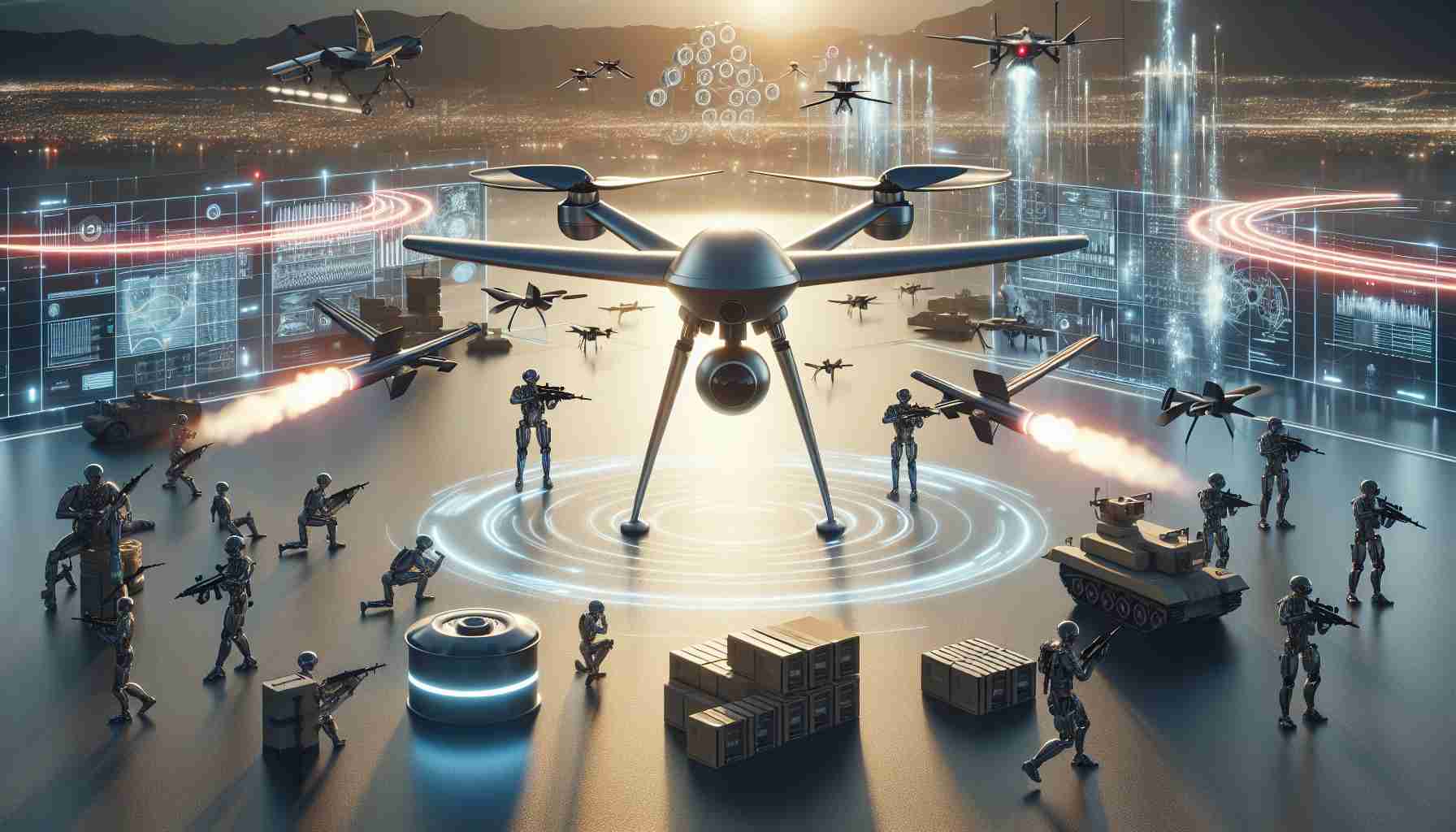The lines between science fiction and military reality are blurring as artificial intelligence (AI) takes a front seat in recent conflicts. International discussions, guided by analyses in global press, note the increasing reliance on AI in warfare, highlighted in the Courrier international issue titled “AI Enters the War”. This topic not only resonates with the curriculum for final year students but also serves as fertile ground for debaters and researchers alike.
The deployment of AI in combat zones, like Ukraine and Gaza, signifies a shift in military tactics. For example, the use of swarms of drones that operate collaboratively without human direction demonstrates an advancement where weapons systems, imbued with what’s termed as ‘swarm intelligence’, make autonomous decisions.
The aforementioned technology isn’t the only one on the rise. The world is witnessing an increase in the development of various autonomous weaponry. From robotic quadrupeds to sentinel guns operated by AI, nations are swiftly advancing towards a more robotic military presence. This technological march has outpaced international regulatory measures. Although there was global agreement against anti-personnel mines through the 1997 Ottawa convention, intelligent weapons systems pose a more complex challenge for global governance, as governments race toward an AI arms race with no clear route to reverse the trend.
To explore the military application of AI further, Courrier international curates three insightful texts in their dossier. Additionally, for those interested in political and religious intersections, the publication recommends a USA Today piece on the rising “Christian nationalism” post-Trump’s presidential campaign, linking back to educational discussions on state and religion in the classroom.
Most Important Questions and Answers
1. What are autonomous weapons?
Autonomous weapons, often referred to as lethal autonomous weapon systems (LAWS), are designed to select and engage targets without human intervention. They operate using AI and machine learning to detect, track, and destroy targets based on predefined criteria.
2. What are the key challenges associated with autonomous weapons in modern warfare?
The primary challenges include ethical and moral concerns about delegating life-and-death decisions to algorithms, the risk of malfunctions or hacking, escalation of conflict due to lowered barriers to engage in combat, and difficulty in assigning accountability for actions taken by autonomous systems.
3. What are the controversies surrounding autonomous weapons?
A major controversy is the “killer robots” debate which centers on the morality of allowing machines to decide who lives or dies. There’s also concern about an AI arms race potentially leading to global instability and the lack of comprehensive international laws regulating the use of LAWS.
Advantages and Disadvantages
Advantages:
– Reduced Risk to Human Soldiers: Autonomous weapons can perform dangerous tasks without risking human lives, such as reconnaissance in hostile environments or diffusing explosives.
– Increased Efficiency: AI can process information and make decisions faster than humans, which could theoretically lead to more effective combat operations.
– Operational 24/7: Unlike human soldiers, autonomous weapons are not limited by fatigue, allowing for round-the-clock operations.
Disadvantages:
– Ethical Concerns: The idea of machines making life-and-death decisions raises profound moral issues and concerns about the value of human judgment in warfare.
– Lack of Accountability: It can be difficult to determine who is responsible for the actions of an autonomous weapon if it malfunctions or is used improperly.
– Technology Risks: Autonomous weapons are vulnerable to hacking, technical glitches, and unforeseen behavior due to complex AI algorithms.
Related Links
For those wishing to explore the broader aspects of AI as it pertains not only to warfare but to society at large, you might consider visiting domains like:
– United Nations for information on international discussions about LAWS.
– Human Rights Watch for perspectives on the human rights implications of autonomous weapons.
– International Committee of the Red Cross for insights into humanitarian law considerations.
Please note these URLs are to the main domains of major organizations likely to be involved in international discussions and regulatory considerations regarding autonomous weapons. The information pertaining to autonomous weapons would typically be found within their respective news or publications sections. Always ensure to verify the URLs and the content for the latest updates due to the ever-evolving nature of technology and international discourse.
The source of the article is from the blog kunsthuisoaleer.nl

